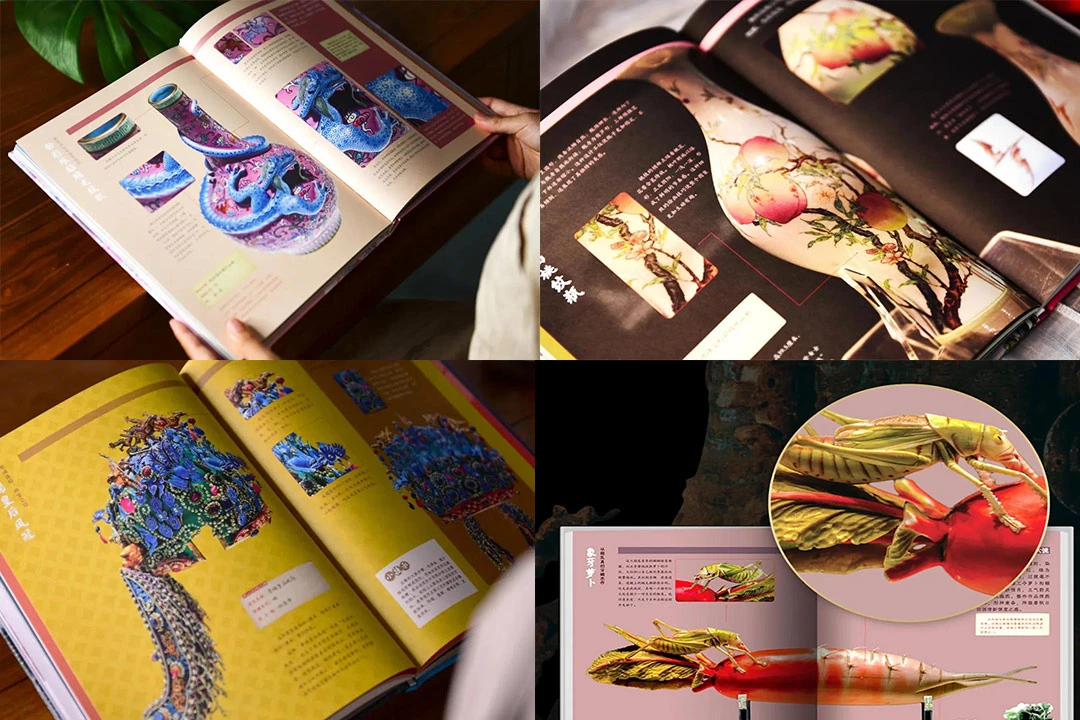In recent years, our fascination with museums has surged to unprecedented heights. What was once a niche interest has become a staple on every traveler's itinerary. But why have museums captured the hearts of so many?
Museums offer a journey of endless exploration, where we, like voyagers beyond time and space, immerse ourselves in the aesthetics, passions, explorations, desires, creations, and beliefs that have shaped human civilization over millennia. Admiring the beauty and artistic essence left by countless lives, we marvel at humanity's incredible creativity and imagination.
Professor Martin, a Cambridge scholar dedicated to studying Chinese culture, reflects with envy, "I most admire the Chinese people; their relics connect thousands of years of civilization seamlessly." Each museum artifact whispers silent stories, each pattern and motif bearing witness to history. Yet, despite the treasures museums hold, many visitors find it impossible to see everything in one visit.
The Monumental "Museum Encyclopedia" and "National Treasure Guide"
The recent release of the "Chinese Museum Encyclopedia: Top 10 Museums" has taken the country by storm, selling over 500,000 copies within the first three hours. This masterpiece spans 10 volumes, showcasing 220 iconic artifacts from 10 major museums, accompanied by 2,196 vivid illustrations. It comprehensively chronicles 8,000 years of Chinese civilization.
From the Neolithic era to the end of the Qing Dynasty, these artifacts span epochs and geographies, encapsulating the essence of Chinese culture. The books offer readers a 24/7 "customized museum experience" at their fingertips, making rare and cherished relics accessible to all. Every artifact in "China Museum Encyclopedia" tells a silent story—a testament to human ingenuity, creativity, and faith across ages. Whether it's the intricate bronzes of the Shang Dynasty or the delicate silk paintings from the Han Dynasty, each piece offers a glimpse into the rich tapestry of Chinese history.
Each volume meticulously details the museums, offering profound insights into regional specialties and historical periods. For instance, the Forbidden City and the National Museum of China exemplify grandeur, while the Henan Museum showcases ancient observatories and the Nanjing Museum depicts wealth and opulence.
Through these pages, readers not only see relics but also touch the pulse of Chinese civilization, understanding the historical context and artistic achievements that define each era. From the dawn of civilization to the twilight of imperial eras, "China Museum Encyclopedia" is not just a book; it's a gateway to 8000 years of cultural heritage. Each page unfolds like a meticulously curated gallery, offering a profound exploration of China's most cherished artifacts spanning from the Neolithic Age to the end of the Qing Dynasty.
Embracing the Future of Museum Experience
In essence, the "Chinese Museum Encyclopedia" transcends the confines of traditional museum visits, offering a transformative experience that brings Chinese history and culture vividly to life. By bridging the gap between past and present, these volumes enrich our understanding of Chinese civilization and inspire a deeper appreciation for the artistic and historical legacies that define us. Detailed photographs, enlarged sections, structural diagrams, craftsmanship illustrations, and historical narratives bring artifacts to life, allowing readers to appreciate the intricate details and cultural significance hidden within each piece.
This limited edition collection not only celebrates China's rich cultural heritage but also invites readers to embark on a journey through time, exploring the beauty and wisdom of a civilization that continues to shape the world today.
These volumes transform abstract historical concepts into tangible, visual experiences. They bridge the gap between the academic and the everyday, offering everyone—from scholars to schoolchildren—a chance to appreciate the profound cultural and historical significance of each artifact. Beyond mere visual indulgence, these volumes serve as educational tools. They decode the intricacies of each artifact—its historical context, artistic significance, and cultural symbolism—making them accessible to all readers. Whether you're admiring the Zeng Hou Yi Bells (曾侯乙编钟) from the Warring States period or the exquisite craftsmanship of the Four Goats Square Zun (四羊方尊) from the Shang and Zhou Dynasties, each artifact tells a story that transcends time.
Moreover, the publication's affordability—originally priced at 998 RMB but available at a special launch price of 299 RMB—ensures that this cultural treasure trove reaches a wide audience, making it a must-have for history enthusiasts, art lovers, and educators alike.
Embracing Diversity and Depth
One of the remarkable features of this collection is its inclusivity and diversity. It doesn't just focus on the mainstream artifacts but also celebrates regional diversity and lesser-known treasures. From the imperial splendors of the Forbidden City to the subtle elegance of provincial museums, each volume offers a glimpse into the multifaceted nature of Chinese culture.
- The Palace Museum (Beijing): The imperial seat of power, preserving centuries of dynastic rule and cultural opulence.
- The Shaanxi History Museum (Xi'an): Guarding the ancient capital's treasures, from Terracotta Warriors to Tang Dynasty masterpieces.
- The Hubei Provincial Museum (Wuhan): Echoing the romantic spirit of Chu culture, with artifacts reflecting its storied history.
- The Henan Museum (Zhengzhou): Home to China's oldest astronomical observatory site and a testament to its profound ancient roots.
- The Nanjing Museum: Showcasing the wealth and splendor of the Yangtze River Delta's historical legacy.
- The Shanghai Museum: A comprehensive collection spanning millennia, offering insights into China's diverse artistic and cultural evolution.
- The Liaoning Provincial Museum (Shenyang): Featuring rare Qing Dynasty artifacts, illuminating northeastern China's historical journey.
- The National Palace Museum (Taipei): Safeguarding cultural continuity with treasures that trace back to China's imperial lineage.
In conclusion, "The Complete Collection of Chinese Museums" isn't just a set of books; it's a portal to understanding China's profound cultural legacy. It invites readers of all backgrounds to immerse themselves in the beauty, complexity, and depth of Chinese civilization. Whether you're an art aficionado, a history buff, or simply curious about the world, this collection promises to enrich your understanding and appreciation of one of the world's oldest and most vibrant cultures.




